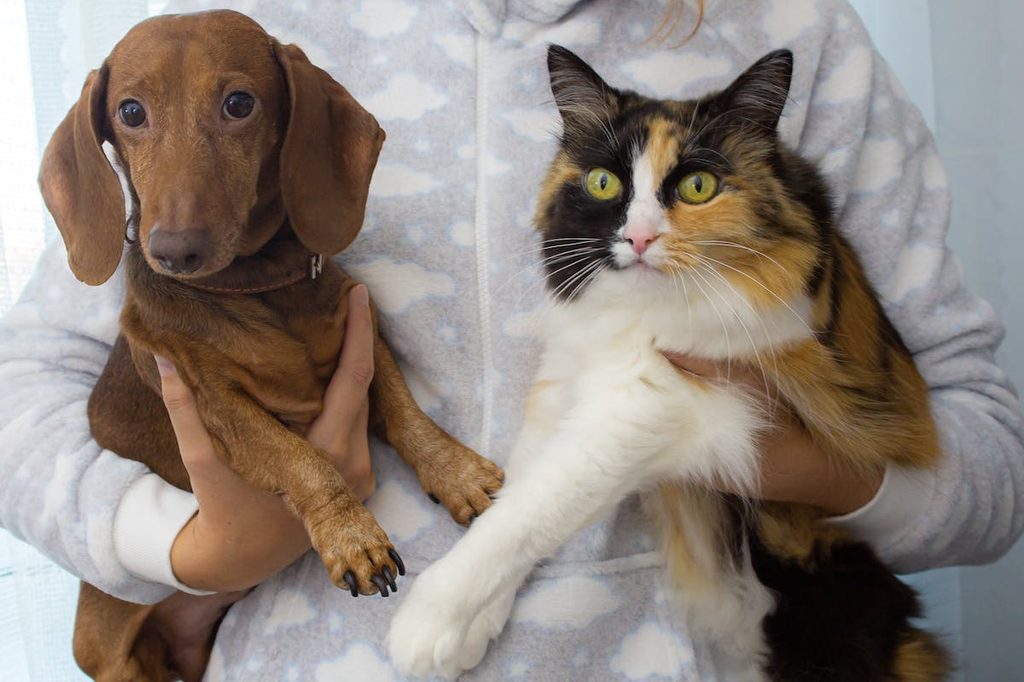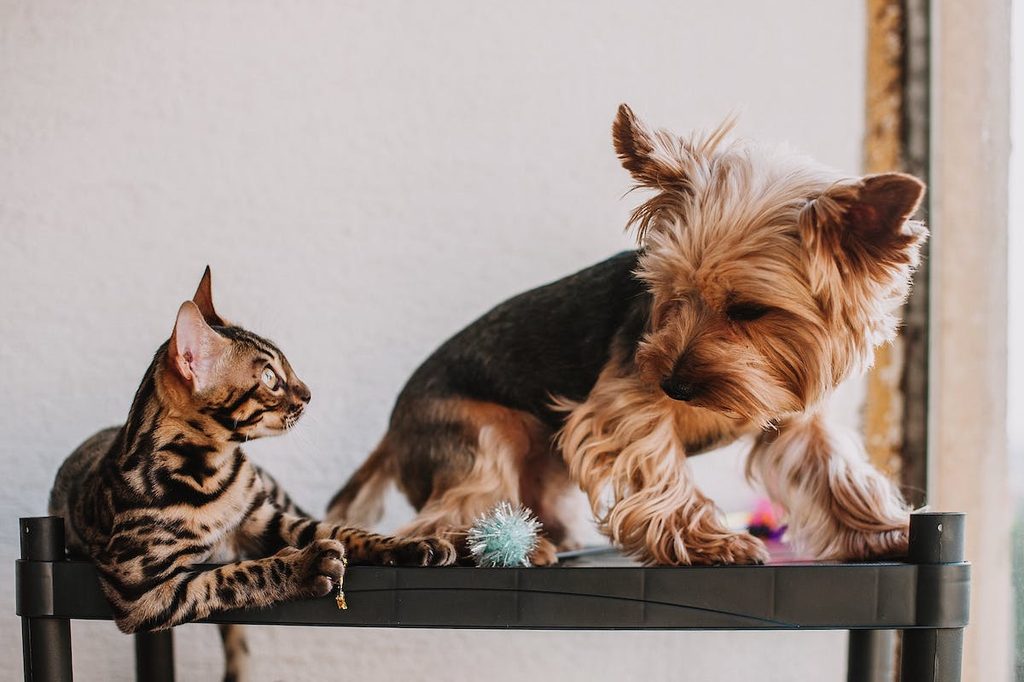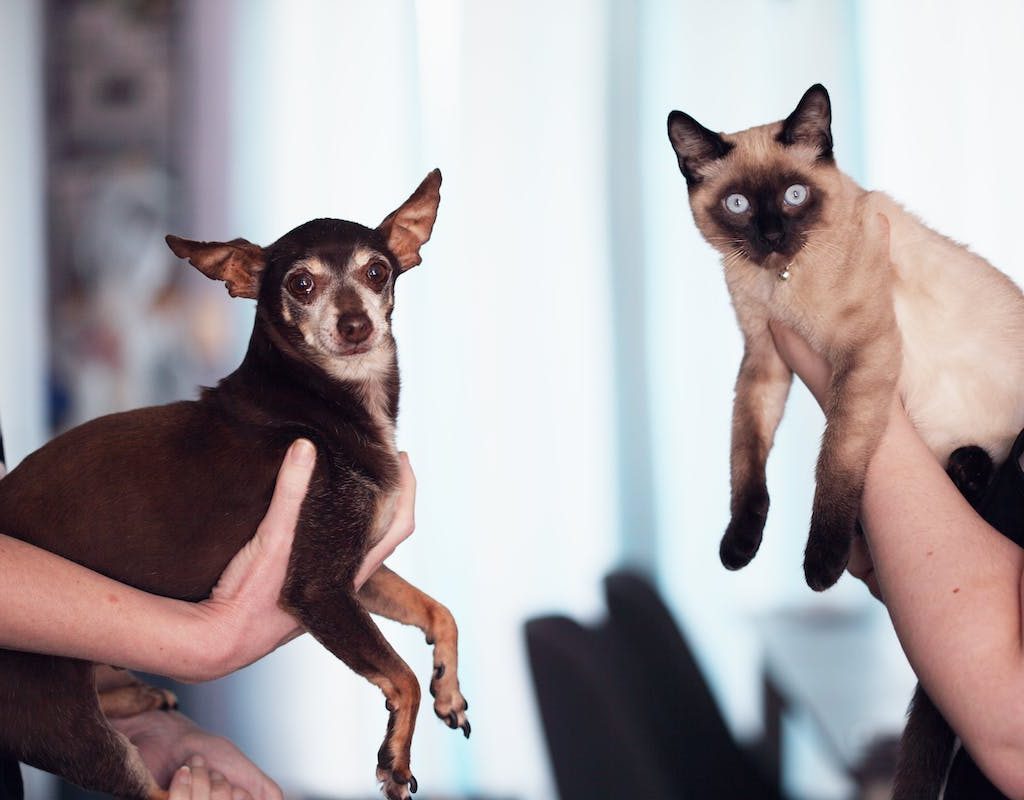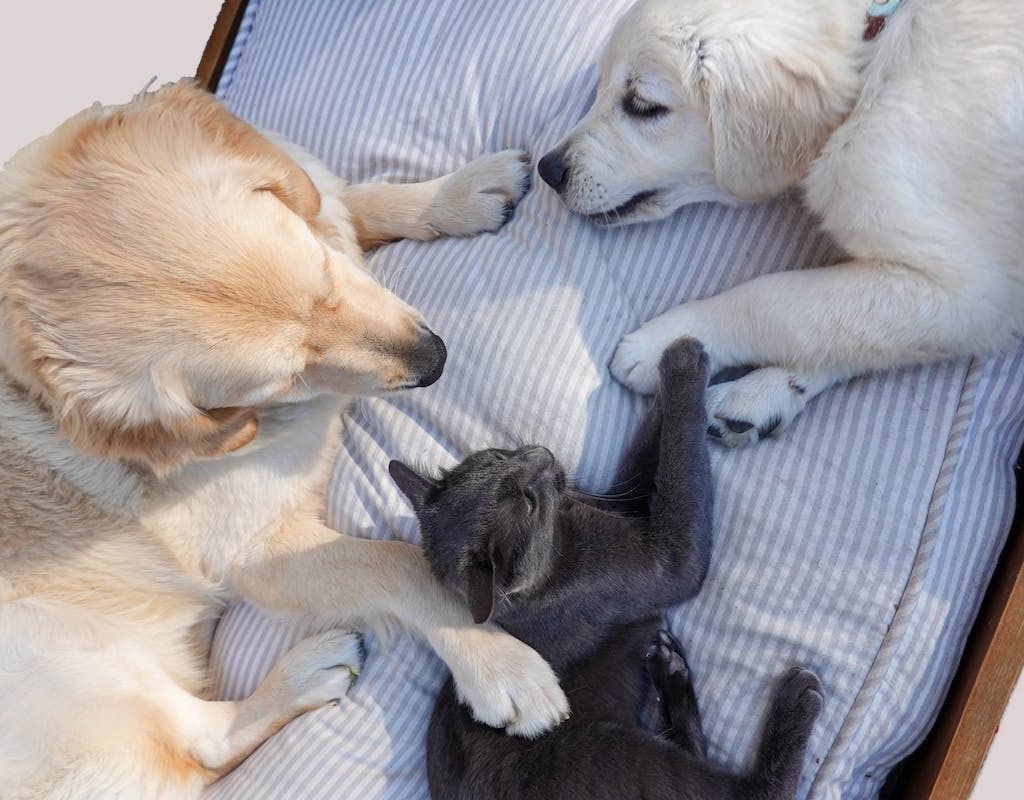
“They’re fighting like cats and dogs” is a euphemism often used to describe sibling rivalries, marital strife, or disagreements among company executives. However, it stems from the idea that two of the world’s most popular companion animals, dogs and cats, prefer to feud with one another over forming friendships.
For folks who are distinctly “dog people,” “cat people,” or “not-into-either people,” whether this idea is accurate or not is irrelevant. For those who love — or have — both dogs and cats, it’s essential to determine: Why do cats hate dogs? Better question: Do cats truly hate dogs, or is this cliche a rumor?
The truth is that the answer depends on the specific animals. Some get along famously. Others … do not. Still, there are ways to help the two animals become friends or at least peacefully coexist under one roof. Now that we’ve scratched the surface, let’s dig into what causes cats and dogs to fight like, well, cats and dogs.

Why do cats hate dogs?
There’s no one-size-fits-all answer to this question. The issue could stem from one or several problems, depending on the animal. However, history, preferences, breed, and prior experiences with dogs can factor into a kitty’s dislike of canines.
History
These days, some pet parents treat their cats and dogs like human children (or better). We cuddle our furry friends in bed and let them hog the blankets, endlessly research the best diets, and break the bank on holiday gifts and seasonal photo shoots. However, this love fest between humans and tiny beasts hasn’t always been the case.
Before dogs and cats were fully domesticated, the animals had to fend for themselves for food. There weren’t automatic feeders or pet parents that fed their animals at 5 p.m. like clockwork. Instead, the animals had to find their own food. With limited resources, food fights broke out. Feral dogs and cats may view one another as threats today, and even ones under the same roof with consistent resource access may engage in resource guarding.
Also, history may involve more nurture than nature. If a cat has had a previous experience with a dog that was poor, the feline may be turned off from the animal.
Dogs are pack creatures — cats are not
There’s a reason that dogs have gotten the distinction of (hu)man’s best friend: They’re pack creatures by nature. As the more social of the two animals, pups generally enjoy attention and playing. Cats, on the other hand, are solitary animals. Kitties hunt their food and are typically more inclined to spend their days chilling alone — hence why some tend to hide. A cat may view a playful dog’s attempts as a mild nuisance, at best, and offensive at worst.
Dogs chase — cats run
Another way these two animals are opposites: Dogs, particularly those bred for hunting, enjoy a good chase. Their ancestors hunted small animals through chase. These days, the chase can be more of a game, like fetch. However, cats generally don’t want to play along. In fact, given the choice between “fight” or “flight,” most cats will choose flight and run (again, hence the hiding). A cat may not “hate” a dog sibling when they hide instead of engaging in the game — the feline may just be setting those all-important boundaries we talk about as humans.
However, if a cat has to run away from treasured spots on the couch too often, the pet may start to detest the canine intruder. Some cats won’t bother running in the first place, though, and may put a dog in their place with a hiss or pounce on the first attempt at a game of “tag.”
The introduction went too quickly
Experts say slow introduction is critical if a family already has a dog or cat. Opening a kennel and expecting the two to hit it off swimmingly can trigger feelings of fear, threat, and territoriality. Most experts advise not having the two meet face to face in the early days but playing off both animals’ keen senses of smell by swapping items like blankets with the other’s scent.
Poor home organization
While family dinners are recommended for humans, you’re better off keeping a dog and cat separate during feeding time. A cat may feel territorial or threatened if a dog eats too close and vice versa. Similarly, keep a cat’s litter box in an area only they can access if possible, or train the dog to steer clear.

Can dogs and cats get along?
Yes, dogs and cats can get along. The idea that the two are natural rivals is debatable, but the two animals can often be friendly or at least live safely in the same home. These tips can help you buck the idea that dogs and cats don’t mix.
- Ask questions. If you have a cat in the home and want a dog, ask the breeder, shelter staff, or current pup owner whether the breed and specific canine get along with kitties. Shelters often cat-test a dog.
- Introduce slowly. Keep the two animals in separate rooms and do a scent swap using items like bedding with the other’s smell. After a few days, have the two meet through a gate. Keep the dog on a leash several yards from the gate. Watch body language and treat for calm behavior. When the two consistently interact calmly, you can remove the gate. Still, keep the dog on a leash and repeat. Eventually, you can graduate to supervised off-leash interactions but should wait a few weeks to start leaving the two out and about without you home (you’ll want to start with short intervals of unsupervised interactions, too).
- Get help. Whether you introduced the two too quickly or are experiencing hiccups, help is available. A vet can refer you to an animal behaviorist who can help you smooth out the relationship between a dog and a cat.

Final thoughts
Dogs and cats aren’t always best friends — at least not right away. Why do cats hate dogs? Fears of limited resources like food, territoriality, a desire to be left alone, and poor experiences with dogs may factor into a specific cat’s dislike of dogs. Humans can help the two animals get along. Slow introductions and separate spaces are tried-and-often-true recommendations from professionals. If you need further assistance, an animal behaviorist can help. Your vet can usually provide a referral.



